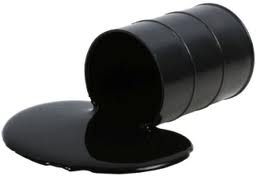
Oil prices are racing higher as investors bet that central bank cash will soon boost a market afraid of Middle East war and worried about North Sea supplies, but the rally looks increasingly inflated by speculative guesswork.
Oil is up almost a third in six weeks at a time when the world economy, and hence fuel demand, are extremely weak.
Today’s oil price assumes the U.S. Federal Reserve will soon launch a new round of quantitative easing to stimulate the economy, or that bellicose rhetoric between Israel and Iran will lead to conflict, or that North Sea production problems will be long-lasting.
But none of these factors is a safe bet and if they were removed, the price of oil could fall quite sharply.
“The market is decoupling from fundamentals,” said Carsten Fritsch, an analyst at Germany’s Commerzbank in Frankfurt. “Much of the strength is based on factors – such as more U.S. economic stimulus – that are far from guaranteed.”
Brent crude oil hit $115 per barrel on Monday, its highest for three months and up 30 percent since the end of June. Oil hit an all-time high of $147 in mid-2008 just before the onset of the credit crisis, which sent prices down to $36 just six month later.
Oil prices are now well above the $50-$80 per barrel cost of production from most of the world’s newest oilfields, a level believed to be a natural floor for oil prices.
One spur for prices has been concern over a fall in North Sea output due to planned maintenance, which will help cut production in September by 17 percent from a dozen British and Norwegian crude oil streams.
For a short period, the North Sea oil spot market could be squeezed if demand for some grades outstrips supply, traders say, but maintenance work is likely to be completed fairly quickly and supplies will then resume.
HOSTILE RHETORIC
The oil market has also been strengthened by hostile rhetoric from Iran and Israel.
Israeli Prime Minister Benjamin Netanyahu has promised never to allow Iran to get nuclear weapons and said on Sunday most threats to his country’s security were “dwarfed” by the prospect of an Iranian atomic bomb. Washington has tightened sanctions on Iran and sought to increase international diplomatic pressure to curb Tehran’s nuclear ambitions.
Iranian leaders have talked of closing the Strait of Hormuz at the head of the Gulf, through which around a fifth of global sea-borne oil exports flow, if they are ever attacked.
However, with U.S. aircraft carriers within striking distance, Hormuz could not be closed for long, and it almost certainly would not suit Iran to try to close the strait, through which its oil and other exports also pass.
“Iran is not about to close Hormuz,” said Samuel Ciszuk, Middle East analyst for KBC Energy Economics. “Fear of war between Iran and Israel has been greatly overstated.”
But while Middle East tensions may be providing largely psychological support for oil, action by the U.S. central bank could have a dramatic impact on oil’s supply and demand balance.
Since late 2008, the Federal Reserve has bought $2.3 trillion in long-term securities in a drive to spur growth and revive the economy, indirectly pumping billions into assets markets and injecting huge liquidity into oil and commodities.
During the first round of quantitative easing from November 2008 to March 2010, oil more than doubled, and in the course of QE2, the second round between November 2010 and March 2011, it rose by a third.
Bank of America Merrill Lynch say monetary easing of $600 billion in September could push commodity prices sharply higher.
“Oil prices would likely increase by 14 percent on a third round of QE,” the Merrill Lynch strategists said in a note.
“SIGNIFICANT RISK”
However it is far from certain the Fed will announce QE3.
Jim O’Neill, chairman of Goldman Sachs Asset Management, said in a note on Monday he could not see why the Fed would be in a hurry to launch more quantitative easing: “U.S. financial conditions have eased quite a bit. While the United States is not growing at a pace, the case for further QE right now seems quite debatable.”
Dean Maki, a Barclays Capital economist in New York, agreed: “We do not see a convincing case for QE3 in September.”
Without the three obvious props — North Sea, Middle East war or QE3 — oil supply and demand fundamentals look sloppy.
All three of the big oil forecasters, including the U.S. Department of Energy, say global output has exceeded demand by a wide margin even with an embargo on Iranian oil, filling up stocks of oil and offering a sizeable cushion to cope with any unexpected supply shock.
“Forecasts paint a very bearish oil picture,” said David Hufton, managing director of brokerage PVM Oil Associates.
And yet investors’ appetite for oil has risen steadily with speculators increasing net exposure to crude oil futures and options on both sides of the Atlantic.
Data from the U.S. Commodity Futures Trading Commission and InterContinental Exchange show net long positions have increased in Brent and U.S. crude despite three months of declines in open interest and fairly low traded volumes.
Commerzbank’s Fritsch said this could make a sell-off sharper if it comes.
“If no round of QE is announced by the Fed this month, the oil market is likely to dip. Hopes are riding so high that there is a significant risk of prices falling.”
Source: Reuters
We use cookies to improve your experience. By continuing to use our site, you accept our Cookies, Privacy Policy,Terms and Conditions. Close X